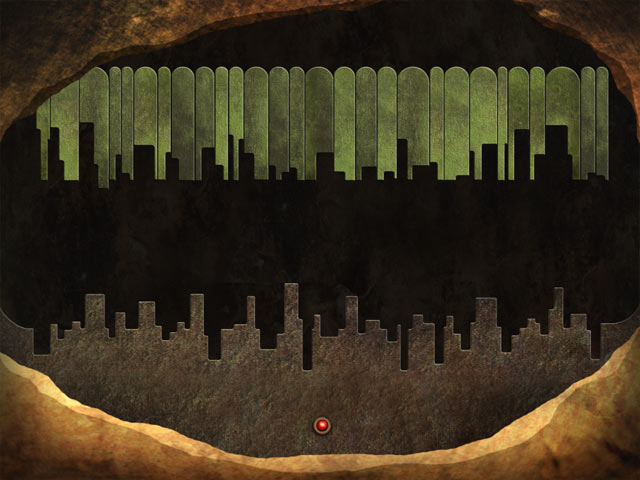
Cocaine is one of the few products grown, processed, exported and distributed in the Third World. Exports alone are valued at about half the world coffee trade if estimates of deliveries to consumer countries are combined. But when bulk shipments are broken down for the individual customer, prices skyrocket by over 300 percent. Banking illegal cocaine earnings, however, is far more complicated than banking coffee income.
(The organ completed its journey after being transferred to a helicopter.) The claim that bin Laden family members (and other Saudis) were allowed to secretly fly out of the U.S. And back to Saudi. LEAVES - The Journey. All Discussions Screenshots Artwork Broadcasts Videos News Guides Reviews 0 in Group Chat View Stats. Travel to the mystic lands of Mononino and help the Treefruities to recover the lost leaves of their home tree. Search for clues to master the many puzzles and challenges on your journey.
Leaves: The Journey is the first fantasy puzzle adventure set in the land of Mononino. You play as a nameless protagonist on a mission to return the 30 lost leaves to the tree belonging to the Treefruities. The series continues with the sequel, Leaves: The Return. There are 16 Steam Achievements, all documented in the walkthrough below.

Colombia, Peru and Bolivia remain the most important cocaine-producing countries, but the business has now spread to most of South America. Central American and Caribbean nations are involved too, but primarily as transshipment and financial centers. From the thousands of peasant families who grow coca leaves to the few billionaire drug barons who direct much of the production, processing and trafficking of cocaine, earnings wield enormous economic, social and political influence in Latin America. Apart from the corrupting power of such huge sums of narcodollars on police and judicial systems, Congressmen are elected with cocaine funds, banks are sustained or broken by trafficking groups and exchange rates fluctuate in sympathy with the state of the trade.
Coca Cultivation
Coca leaves have been used in rituals to alleviate hunger and to relieve the effects of living at high altitudes in the Andes mountains and the Amazon lowlands for at least 5,000 years. When chewed, coca, a natural anesthetic, numbs the mouth and produces a lightheadedness. Brewed as a tea, the leaves make a milder stimulant than coffee. Because millions of South Americans, highland peasants and Indians, fiercely defend these traditional uses of coca, the cultivation of coca is licensed in many areas. A very small part of the crop is also exported legally for medical and other purposes.
The eastern slopes of the Andes in Peru and Bolivia, where hundreds of steep terraces climb the mountainsides as high as 2,000 meters, remain the main coca-growing areas. But much of the upper Amazon is dotted with plantations; some stretch blatantly across the lowland plains, others are hidden in the forest. To cultivate the coca plant, which grows as a shrub or tree, well-grown cuttings or seed can be used. Between six and 18 months after planting, the elliptical leaves can be harvested. The plants continue to produce for up to 30 years.
Coca Production Estimates
Yields vary considerably according to the variety grown, soil, climate and level of investment in the plantation. The Tingo Maria area in the eastern foothills of the Peruvian Andes can produce six harvests a year, while the average is three or four. Even with minimal inputs and attention, one hectare of mature coca plants produces a ton of coca leaves in 12 months. It takes 300 pounds of coca leaves to produce one pound of cocaine. However, some varieties, especially the tall, bushy Amazon plant, have a much lower cocaine content than others.
Apart from the more obvious problems in arriving at reliable production figures such as detecting, through aerial photography, plantations that are often hidden under thick jungle canopy, the speed with which producers respond to anti-drug campaigns makes it difficult to keep up with changing production levels, locations, prices and transport routes. Peru is considered the biggest coca leaf producer, with about 60,000 tons, followed by Bolivia with about 50,000 tons. But Colombia, with about 15,000 tons, leads the world with the largest cocaine trade. Traffickers here finance much of the coca cultivation by Indians and settlers in western districts of the Amazon basin. Experts believe about 60 percent of South America's exported cocaine is refined in Colombia. Brazil and Ecuador, however, have expanded very rapidly in the last three years, and minimum estimates run at 11,000 and 6,000 respectively. Small plantations in other countries such as Venezuela and Argentina raise the total number of tons to at least 145,000.
The Conversion Process
Because the coca leaves are bulky, the first stage of processing sometimes, but not always, occurs after the leaves are dried and takes place near the growing area. The leaves are usually steeped in petrol or kerosene to produce a sloppy mixture that is treated with sulphuric acid, lime, potassium permanganate or other substances according to local methods and prices. When dried, the mixture forms a crude paste that is normally moved elsewhere for more sophisticated refining into cocaine hydrochloride, the white powder.
Chemicals used in the final stage, usually ether and acetone, are expensive, scarce and, as a result of controls imposed during the last year, extremely difficult to obtain and transport without detection. But it is virtually impossible to restrict supplies of petrol, which are transported all over the Amazon to fuel outboard motors, generators and other equipment. In northeastern Ecuador, where the cocaine trade has spilled over from Colombia, petrol sells at four times its official price.
If generous allowances are made for the local consumption of coca leaves and losses during the conversion process, 145,000 hectares planted with coca would produce at least 550 tons of cocaine paste. With the fashion for smoking bazuco, the paste mixture, in South America and to a lesser extent in the United States, we can assume 500 tons is refined into cocaine. Using 2.5 kilos of paste for every kilo of cocaine, South America produces about 200 tons of cocaine a year. Of this between 10 and 20 percent is abandoned en route or seized by the authorities. Last year, Colombian officials confiscated more than 20 tons of paste and cocaine.
Cocaine Earnings
Attempts to stamp out coca by substituting other crops have had limited success in Peru and Bolivia. Nothing else provides a comparable income. The US-assisted control program around Tingo Maria has razed 4,000 hectares of coca and paid some compensation to growers. But the farmers say other crops require more fertilizer and pest control and derive far less income.

Intermediaries, who bring coca seeds, cuttings and promises to buy up production at a good price, often take advantage of Indian communities growing small quantities for their own ceremonies. In exchange for guns, machetes and clothing, the traffickers encourage Indians to expand their production. Turkano tribes in the frontier areas of Brazil and Colombia have been seduced in this way; no other business with such a well-structured organization can compete.
Yet the small grower can hardly expect to make enormous profits. The economics of a very small production unit in the Cauca region of highland Colombia are roughly as follows: to produce about 40 grams of cocaine paste requires about $27 for 25 pounds of coca leaves and $19 for chemicals. The paste, sold locally at around $1.50 a gram, brings in a $14 profit on each batch. A family usually makes about three batches a week; labor is not reimbursed in this case. A picker in the Ecuadorian Amazon is paid $1.50 for a kilo of leaves.
Leaves - The Journey Cracked
Integrated operations in the eastern plains and jungles of Colombia, which can produce over 10 tons of cocaine a month, head the cocaine-production ladder. Using large labor forces, constant supplies of chemicals, clandestine airstrips and fair-sized arsenals, the operators normally ship the processed cocaine to the southern United States in private planes, perhaps with a stopover in the Caribbean. Car mechanic simulator 2015 - maserati download for mac. But every available route is used, from lumber shipments to impregnated Christmas cards to dead animals.

High mark-ups occur at each stage in the process; the value of a kilo of cocaine in, say, Leticia on the Amazon River can be 40 times higher when it is cut and packaged for the Chicago streets. A kilo of cocaine in Bogotá currently averages around $8,000 when sold in bulk. On delivery to the United States the price jumps to about $30,000 a kilo. In other countries it is higher. Thus the minimum value of South America's cocaine exports, before distribution pushes up the price, is around $5 billion. Allowing for the fact that a gram of cocaine sold on the street is rarely more than 50 percent pure, the full commercial value is over $25 billion.
The jackbox party pack 7 download for mac. South American finance ministers are reluctant to treat cocaine and other drug earnings very seriously and have made little effort to quantify the trade. In Colombia $2 billion is a widely-accepted estimate, while figures for Bolivia and Peru are closer to $1 billion and $1.5 billion. The lower figures may be accounted for by Colombia's more extensive control of the shipping and distribution, and Bolivia's and Peru's less attractive economic investment opportunities. A financial analyst in Ecuador calculates annual cocaine earnings there at about $300 million.
Although much of the income goes toward luxurious houses, expensive cars and large ranches, it also fuels the construction industry, financial groups and other businesses that allow money laundering. Above all, it bestows sufficient economic power to buy political influence and threaten democratic institutions. Warlock 2: the good, the bad, & the muddy for mac.
Article copyright Cultural Survival, Inc.
CSQ Issue:
Leaves - The Journey Crack Full

